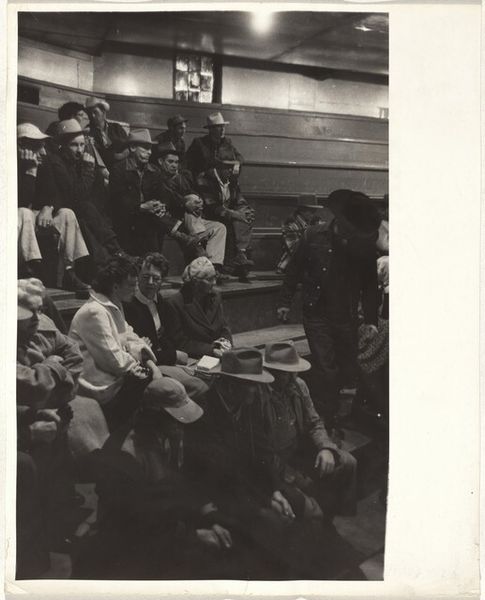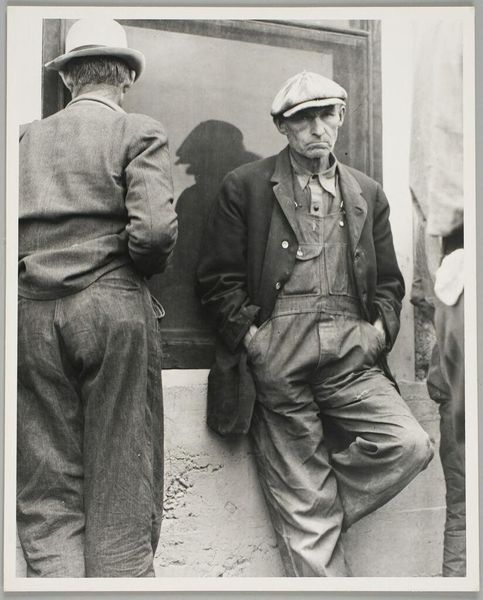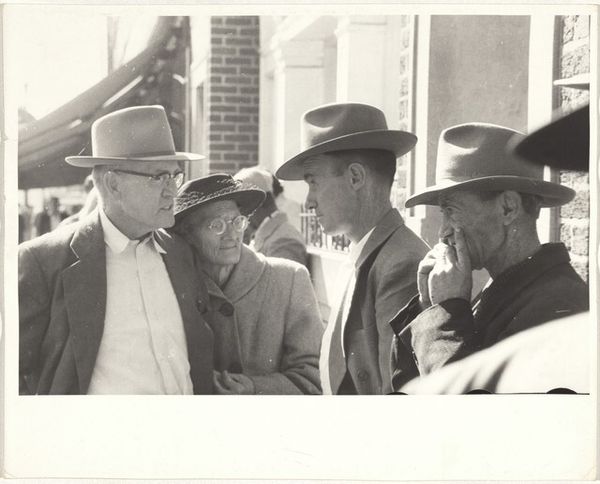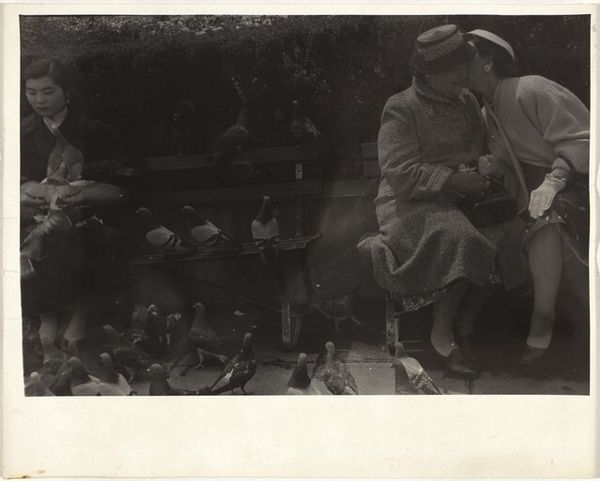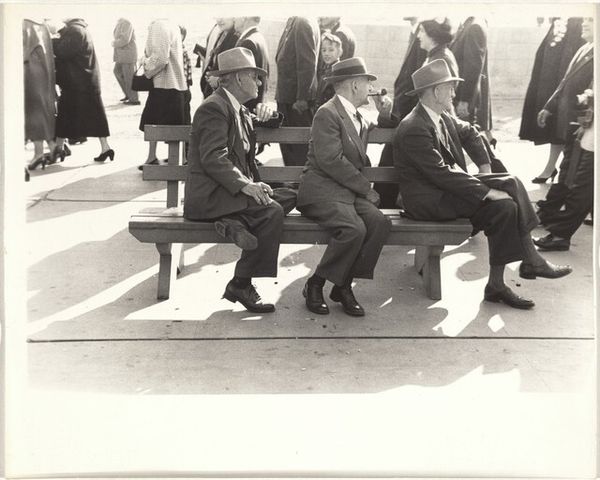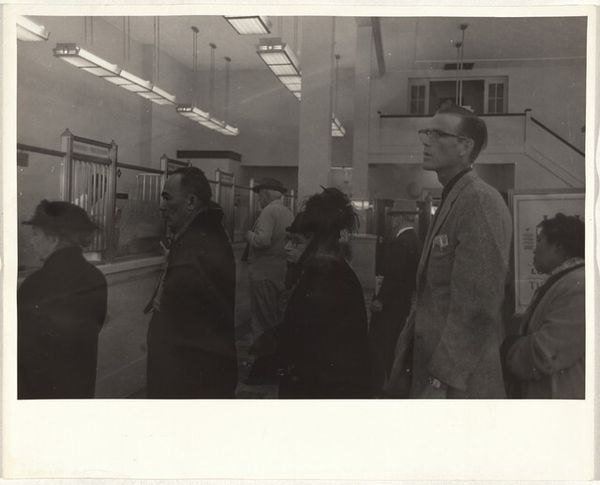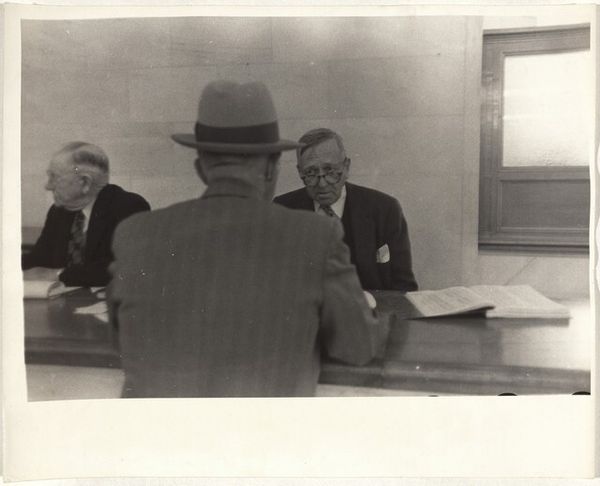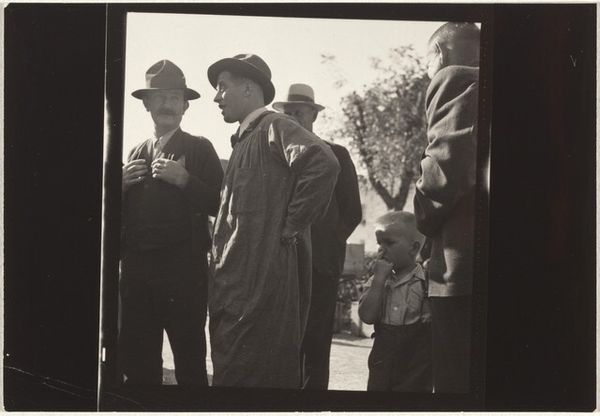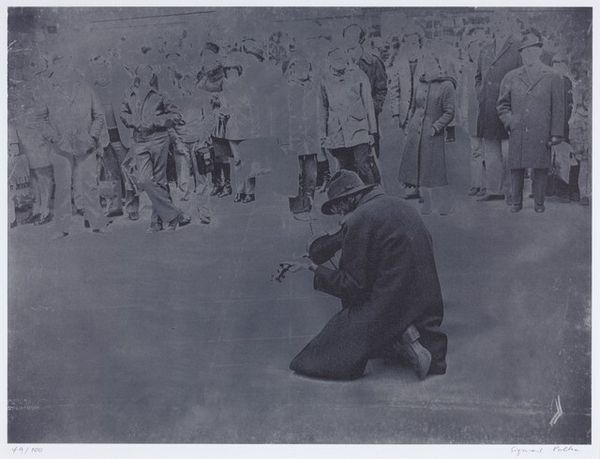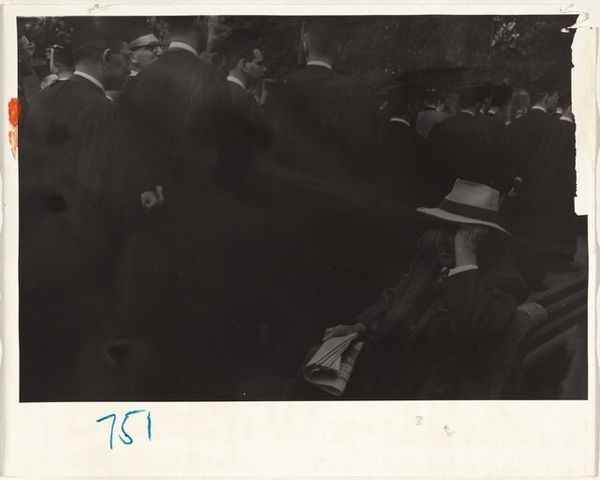
Dimensions: sheet: 25.3 x 20.3 cm (9 15/16 x 8 in.)
Copyright: National Gallery of Art: CC0 1.0
Curator: This photograph, titled "Group on Bleachers--Blackfoot, Idaho," was taken by Robert Frank in 1956 and printed later as a gelatin-silver print. What are your initial impressions? Editor: Somber. Stark. There's a palpable sense of… stillness, almost resignation. The composition, with its tight cropping, really focuses on the texture of their clothing, the angles of the bleachers, creating a powerful sense of intimacy with these anonymous figures. Curator: Absolutely. That somber quality is significant, especially when we consider the context of Frank's work. He was documenting America at a time of post-war boom, but he often focused on those on the margins, revealing anxieties beneath the surface of that prosperity. What symbols are present here? Editor: The hats, undeniably. They obscure the faces, adding to that sense of anonymity, but they're also markers of class and perhaps occupation. Work-worn clothes, slumped posture… these details point to a very specific social stratum. Semiotically, it is clear that these men embody something beyond themselves; they are the archetype of a hard-working but struggling everyman. Curator: Precisely. And consider the child. His posture mirrors the men, shoulders slumped, gaze downcast. The cyclical nature of poverty, perhaps, or the weight of expectation passed down through generations. In the end, it becomes clear this is a snapshot, not of success, but of survival and expectation. Editor: The subtle gradations of grey in the silver gelatin print are equally important. The lighting almost seems to press down on them, confining them. There's not an ounce of brightness to break the feeling. And with how the figures seem cropped out, almost fading off the picture plane, he captures that notion very well. Curator: Ultimately, Frank's power lies in his ability to capture a mood, a feeling. Even without knowing their individual stories, we sense a shared history, a common burden that is subtly transmitted. And while some call it depressing, to others it may ring familiar. Editor: Yes. For me, the enduring appeal lies in its stark honesty, an almost brutal exposure of unspoken realities. It isn't a 'nice' picture, and that is exactly what is so great.
Comments
No comments
Be the first to comment and join the conversation on the ultimate creative platform.

